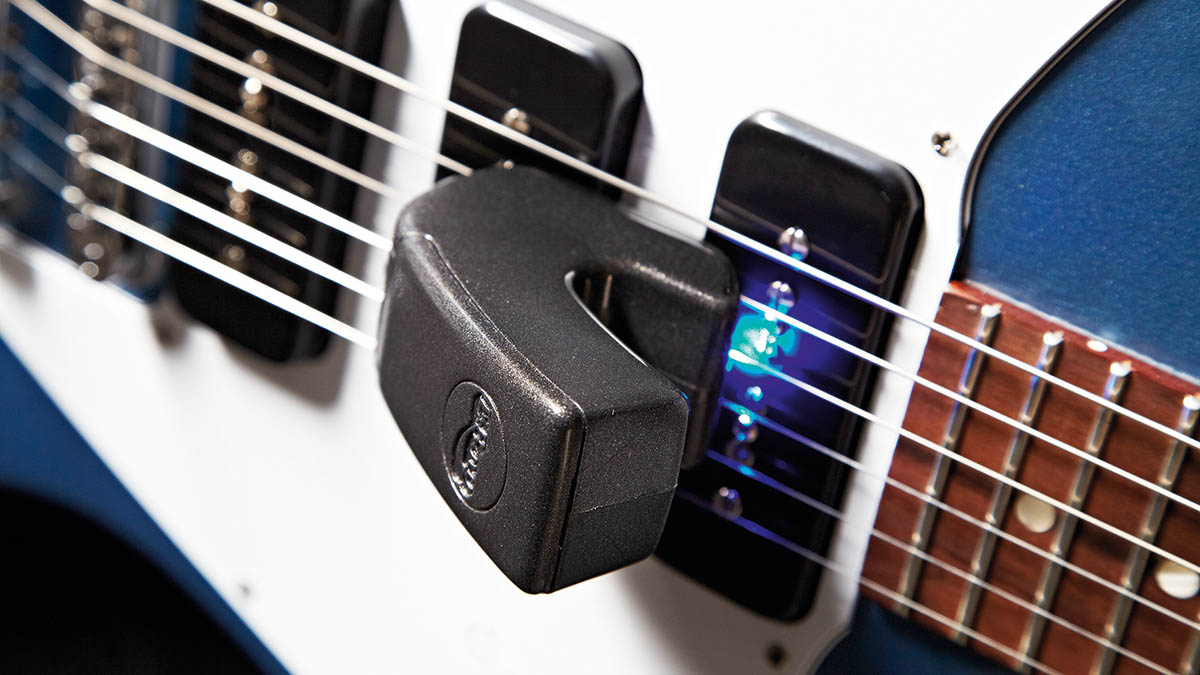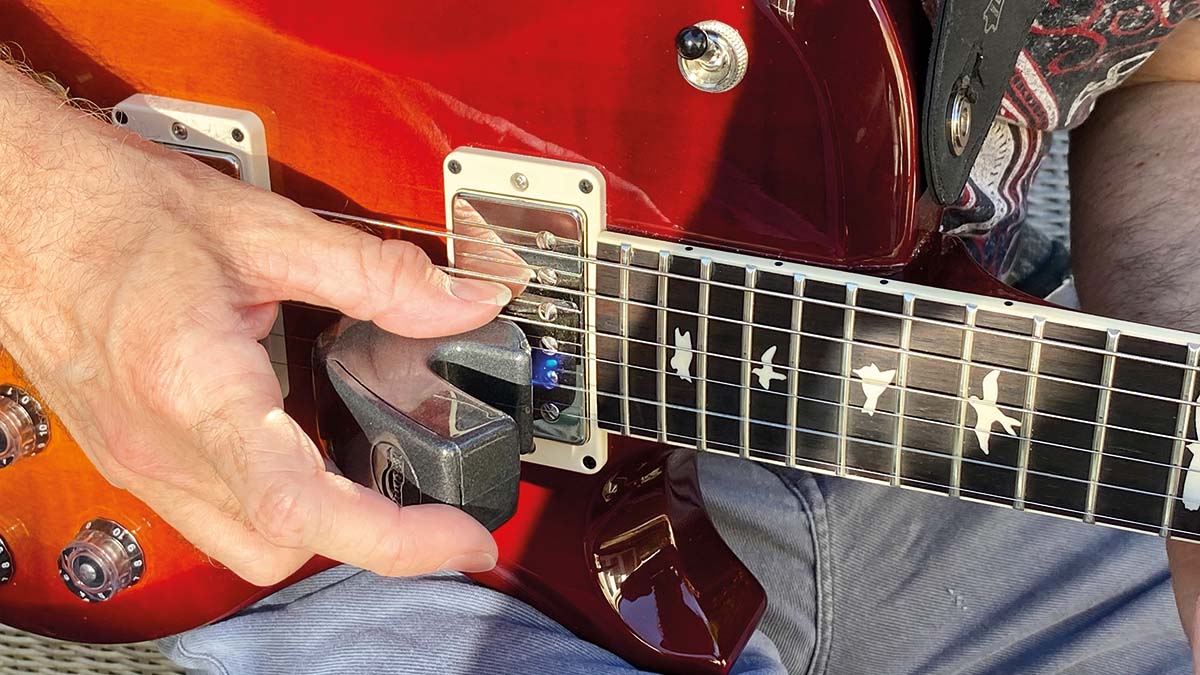In praise of the EBow, one of the most under-appreciated yet influential guitar tools of all time
An enduring niche product that still feels like a hidden secret after all these years, the EBow has been used on countless iconic recordings

The Heet Sound Products EBow is probably one of the most under-appreciated tools for guitar. It has remained in continuous production ever since 1976 and appeared on literally hundreds of recordings and hits, yet it rarely gets mentioned – even by players who have used one frequently. It’s not expensive (the current street price is about $100); it’s very easy to use; and it’s more versatile than most guitarists realize.
The EBow is sort of an “electronic bow,” but instead of dragging the device across strings it employs a pickup and pulsating magnetic feedback circuit to drive a string into vibration without coming into contact with the string. In addition to providing infinite sustain capabilities, the EBow gives players greater expressive control over a note’s attack and decay, enabling the emulation of various wind, brass and bowed string instruments as well as synth-like tones.
Over the years, Heet Sound has released four distinct versions of the EBow, with each version getting a different cosmetic makeover. The first version (1976-1983) had a chrome-plated plastic enclosure with a blue logo and was automatically activated by lightly plucking a string.
The second version (1983-1989) had a black plastic enclosure and red logo, and upgrades included more powerful drive and an on/off switch. The third version (1989-1998) was also black but had a white logo. This version featured enhanced sensitivity and faster attack.

The fourth and current version (1998-present) is called the EBow Plus. It has had a few different color plastic enclosures (light gray to dark gray), and its upgrades include a three-way switch with normal/off/harmonic mode (octave up) settings and a blue LED.
The differences between each version are subtle, with the chrome version being well suited toward more mellow, flute-like tones, the second and third iterations sounding more aggressive and performing techniques like string-sweeping arpeggios better, and the current version delivering a satisfying “Goldilocks” middle ground.
The list of artists that have used EBows and the songs featuring them found over at the ebow.com site is surprisingly long and diverse.
Get The Pick Newsletter
All the latest guitar news, interviews, lessons, reviews, deals and more, direct to your inbox!
Some of the uses are very subtle background textures or feedback-like sustaining notes (like Blue Öyster Cult’s Don’t Fear (the Reaper) and Alice in Chains’ Heaven Beside You) or simple melodic lines (like Blondie’s Dreaming). However, quite a few guitarists have explored the EBow’s potential as an expressive instrument unto itself, with Phil Keaggy’s Amazing Grace being almost a demo reel for the device.
The EBow was particularly popular during the ’80s, playing a big role in Big Country’s bagpipe-like guitar tones as well as songs by Tones On Tail (Christian Says), Love and Rockets (Seventh Dream of Teenage Heaven – Daniel Ash really loved him some EBow), Bill Nelson (The October Man) and dozens of others.
From the ’90s onward, other notable EBow appearances include the Red Hot Chili Peppers (Falling Into Grace), Radiohead (My Iron Lung, Talk Show Host), Van Halen (Spanked), Metallica (Unforgiven) and Foo Fighters (Subterranean).
Suggested Settings
EBow Solo: A neck humbucker and a guitar amp with a high-gain setting and boosted midrange (or an overdrive/distortion pedal) provides smooth, singing sustain.
EBow Synth: Paired with anything from a simple delay pedal to a sophisticated unit like an Eventide H90, Hologram Microcosm or Meris LVX, an EBow can provide dazzling pads, textures and even portamento leads. Playing slide can be particularly inspiring.
Be sure to check out our guide to 6 ways to use an EBow on electric guitar for more creative ideas.
Chris is the co-author of Eruption - Conversations with Eddie Van Halen. He is a 40-year music industry veteran who started at Boardwalk Entertainment (Joan Jett, Night Ranger) and Roland US before becoming a guitar journalist in 1991. He has interviewed more than 600 artists, written more than 1,400 product reviews and contributed to Jeff Beck’s Beck 01: Hot Rods and Rock & Roll and Eric Clapton’s Six String Stories.
“It holds its own purely as a playable guitar. It’s really cool for the traveling musician – you can bring it on a flight and it fits beneath the seat”: Why Steve Stevens put his name to a foldable guitar
“Finely tuned instruments with effortless playability and one of the best vibratos there is”: PRS Standard 24 Satin and S2 Standard 24 Satin review











